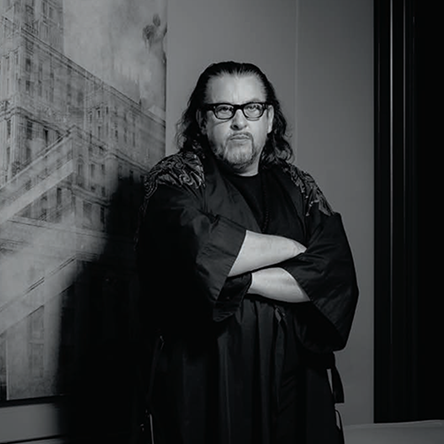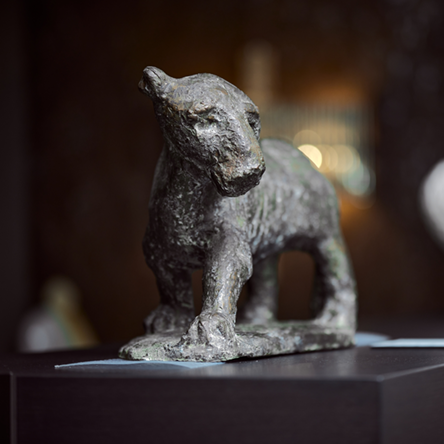NATALIA GONCHAROVA
Natalia Sergeevna Goncharova was born on June 4, 1881, in Nagaevo, near Tula, Russia into a wealthy family of noble lineage. Her great aunt was Natalia Goncharova-Pushkina, wife of the Russian poet Alexander Pushkin. Young Goncharova grew up in a highly intellectual environment and this background distinguished her from her fellow Cubo-Futurists, who descended mainly from peasants and tradesmen. She remains amongst the most esteemed female artists of the 20th century.
Goncharova excelled in many of the art forms that rose to prominence in pre-Revolutionary Russia. In 1901 she enrolled at The Moscow School of Painting, Sculpture and Architecture to study sculpture, but soon decided to pursue tuition in painting. Goncharova’s early work was confined to impressionism as well as a spiritually imbued primitivism, the latter of which was informed by Russian folk art and Byzantine iconography.
Goncharova was inspired by the beauty of the unspoiled nature of Central Russia. During the 1900s, she visited a number of European capitals to familiarise herself with emerging movements such as Impressionism, Cubism and Fauvism, specifically with the works of Vincent Van Gogh, Pierre Bonnard, Paul Cezanne, Henri Toulouse-Lautrec, Henri Matisse and Pablo Picasso. 1911 thereabouts, Goncharova and artist Mikhail Larionov developed Rayonism, a movement inspired by technology and modernity with the emphasis on dynamic rays of contrasting color. By the second decade of the 20th century her style embraced the then contemporary traditions of cubism and most prominently, futurism. Although she moved away from specifically Russian and Orthodox themes relatively early in her career, Goncharova remained committed to art she saw as autonomously Russian, attempting to avoid conspicuously working in non-Russian styles.
In 1909 she helped found the Jack of Diamond group of avant grade artists and in 1911 Goncharova became one of the founders of Der Blaue Reiter group of avant-garde artists led by Wassily Kandinsky, followed by the highly influential Donkey’s Tail Group of artists in 1912, whose members include Marc Chagall.
Goncharova was also a graphic artist who created Futuristic designs and illustrations for books. In her innovative compositions, Goncharova often broke traditional forms by introducing an intricate fabric of images intertwined with musical notations, letters, fragments of words and textual messages. She could be highly controversial and would paint symbols on her face, usually hieroglyphics or flowers and appear topless in public with painted symbols on her body. She was among the first women in Russia who shocked the public with her casual cross-dressing and with her sharp commentary on art and society. She published manifestos and in 1913 and 1914 she held her own one-woman exhibitions in Moscow and Saint Petersburg.
In 1914, for the premiere at Paris Grand Opera, Goncharova created what became her best known work for Diaghilev's big stage productions, the costumes and set design for "Le Coq d'Or" (The Golden Cockerel) ballet by Nikolai Rimsky-Korsakov with choreography by Mikhail Fokin. Back in Russia, she created the curtain for "Daphnis and Chloe" production at the Komissarzhevskaya Drama Theatre in St. Petersburg.
In 1915 Goncharova moved to Geneva, Switzerland and began work on costume and stage designs for the ballet. In 1921 she settled in Paris and began her collaboration with the legendary Ballets Russes impresario Sergei Diaghilev. In 1921, together with Mikhail Larionov, she worked for Diaghilev on the ballet “Chout".







